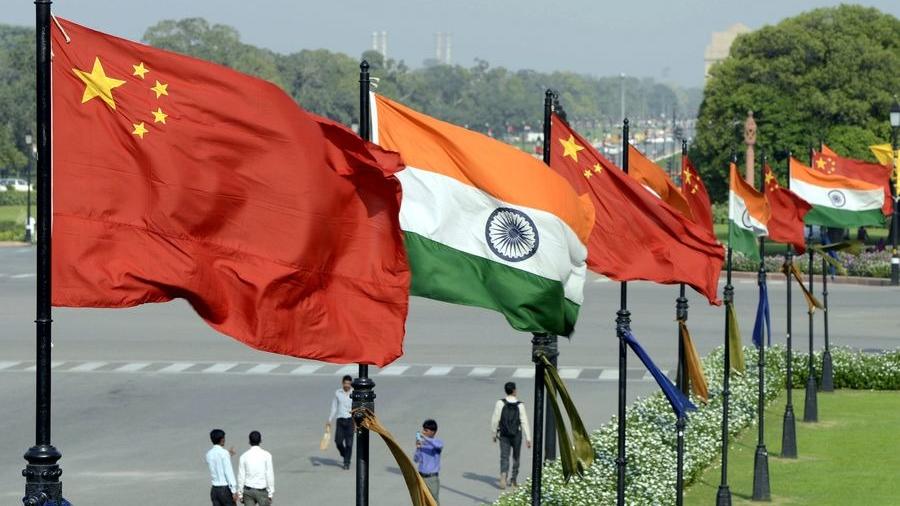
A day after the Indian government selected 750 pilgrims for next month’s Kailash Manasarovar Yatra, the Chinese embassy in New Delhi congratulated India on the upcoming pilgrimage and expressed hope that participants will enjoy the hospitality of the Chinese people.
Spokesperson for the Chinese Embassy in India Yu Jing expressed well wishes in a post on the X social media platform on May 22.
“Warm congratulations on 750 Indian friends who have been selected to undertake this year’s Kailash Manasarovar Yatra! Hope they will not only get spiritually enriched but also enjoy hospitality of Chinese people,” Yu wrote.
READ MORE: Beijing: China, India should focus on development, cooperation
The pilgrimage to Mount Kailash and Lake Manasarovar in Southwest China’s Xizang autonomous region holds religious significance for Hindus, Jains, and Buddhists.
The resumption of the sacred pilgrimage next month after a five-year hiatus is seen as a significant step towards normalizing India-China ties.
It was initially suspended in February 2020 amid the COVID-19 pandemic, then subsequently because of the border standoff between the two countries.
On April 26, India first announced the resumption of the Kailash Manasarovar Yatra as part of measures by New Delhi and Beijing to normalize ties.
Last month, India also announced that direct flight services between the two countries may resume soon, and both countries are actively working on the necessary technical arrangements to restart flight operations.
Experts said the agreement to resume direct flights and Kailash Manasarovar Yatra is a major breakthrough towards restoring bilateral relations, highlighting both countries’ sincere commitment to improving ties.
They also noted its significance as this year marks the 75th anniversary of the establishment of diplomatic relations between China and India.
The recent developments followed January’s meeting between Indian Foreign Secretary Vikram Misri and Chinese Vice-Foreign Minister Sun Weidong in Beijing, where both governments agreed in principle to restart direct air services.
India’s Ministry of External Affairs announced further details of the pilgrimage on May 21.
“Kailash Manasarovar Yatra, organized by the Ministry of External Affairs, is set to commence from June 2025, and will go on till August 2025,” it said.
“This year, 5,561 applicants had successfully registered online, which included 4,024 male applicants and 1,537 female applicants,” the ministry said.
A total of 750 selected Yatris, including 2 LOs (liaison officers) per batch, will travel in 5 batches of 50 Yatris each via the Lipulekh route, and 10 batches of 50 Yatris each via the Nathu La route. Both routes are now fully accessible by motor vehicles and involve very little trekking.
The MEA said that India’s Junior Minister of External Affairs Kirti Vardhan Singh conducted a computerized draw to select pilgrims through a fair, random, gender-balanced process.
Tourist industry stakeholders were overjoyed about the resumption of the Kailash Manasarovar Yatra.
The pilgrimage is a step in the right direction that will pave the way for better China-India relations, said Varaprasad Sekhar Dolla, a professor at the Center for East Asian Studies of the Jawaharlal Nehru University in New Delhi.
There are two driving forces, Dolla added. First, sincere efforts have been made to address the border standoff as a mark of the 75th anniversary of diplomatic ties between the two countries. Second, the impact of US reciprocal tariffs.
As the present thaw between India and China unfolds, both countries need to reflect on why they got into this crisis, Dolla added.
The resumption of the pilgrimage can bring numerous benefits to the tourism industries of both sides, said Jyoti Mayal, president of the Travel Agents Association of India.
It attracts thousands of pilgrims, generating significant revenue for the tourism industry and creating employment opportunities for tourist guides, Mayal said.
Both countries will invest in upgrading infrastructure, such as roads, hotels, and amenities, to accommodate the influx of pilgrims, Mayal added.
Mayal said that by facilitating interactions between pilgrims, tourists, and local communities, the pilgrimage can promote mutual understanding and cooperation.
A return of direct flights and the pilgrimage are significant steps towards strengthening bilateral ties, Mayal added.
Swadesh Kumar, a tour operator who will take a group of pilgrims for Manasarovar Yatra this summer after a five-year gap, said both sides will benefit from this pilgrimage.
READ MORE: Chinese military says ready to work with India on border peace
Travel agents, hotels, restaurants, airlines, and transport services will thrive again on both sides, Kumar said.
Beyond the pilgrimage, it can deepen cultural ties and promote bilateral tourism, encouraging more tourists to visit each other’s side, Kumar added.
Experts said that with the beginning of the Kailash Manasarovar Yatra in June, the focus will now shift to the remaining issues, including sharing data on transboundary rivers, easing visa restrictions, and exchanges between media, scholars, and think tanks in the two countries.
The writer is a freelance journalist for China Daily.


